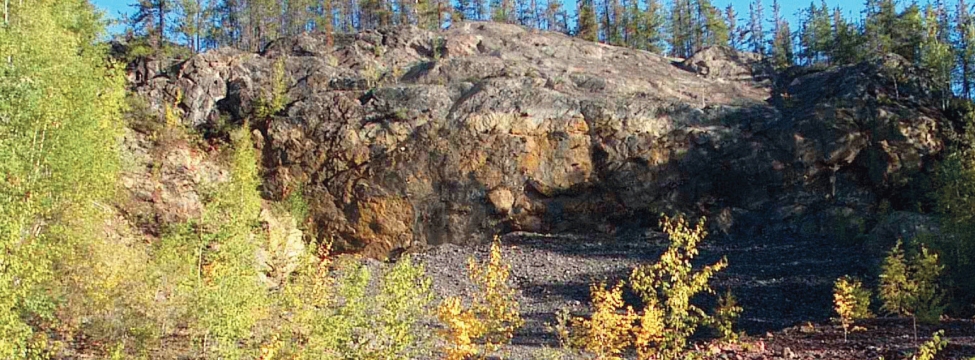To serve you better, our new website displays information specific to your location.
Please visit the site and bookmark it for future use.
Institutional Controls on Radioactive Mine Wastes
During the last decade, most jurisdictions around the world implemented legislative requirements for mining and milling operations to prepare closure plans for decommissioning and reclamation, and to post a bond or other financial instrument of sufficient value to cover the cost of the closure. A decade or more later, those same jurisdictions now face the question of how and under what circumstances they are willing to accept the return of such properties, once the operator has fulfilled their closure obligations, demonstrated compliance and now requests release from further financial bonding. This situation is further complicated when the site involves former uranium mill and tailings operations, where international conventions and national nuclear regulatory frameworks play an overriding and often defining role.
In 2005, the Government of Saskatchewan was faced with the challenge of developing an institutional control framework to manage such properties – more than 30% of the world’s uranium (and highest grade uranium) is being mined and milled there. As a result, the institutional control framework needed to meet international, national and provincial obligations, while ensuring that future generations would not be burdened with having to shoulder that responsibility.
When approached by the Saskatchewan government to assist, Don Hovdebo of SRK’s Saskatoon office took on the challenge and led a team of 5 different provincial government departments over 6 months to develop an effective institutional control (IC) and management framework. The management framework applies to mineral properties, including nuclear sites that have been successfully decommissioned and reached a closed-site status.
The final IC framework addresses all applicable articles of the Joint Convention on the Safety of Spent Fuel Management and on the Safety of Radioactive Waste Management that is administered by the International Atomic Energy Agency (IAEA), the requirements of the federal Nuclear Safety and Control Act, the expectations of the Canadian Nuclear Safety Commission, and provincial Acts and regulations that apply. As well, the framework gained the support and inclusion of traditional users and other stakeholders in the area of the sites and the support of the mining industry, without placing an unnecessary burden on them. The project provided draft legislation and regulations, which were promulgated by the Provincial Legislature in March of 2007.
Currently, one former gold mine and mill site and five former uranium mine sites are in the final stages of being registered in the Saskatchewan IC management framework. This makes Saskatchewan one of the few jurisdictions in the world to have a formal, revenue-neutral mechanism for the permanent, long-term monitoring and maintenance of former uranium mine sites, decommissioned radioactive tailings facilities, as well as a wide variety of the more conventional decommissioned and reclaimed mines and other industrial sites.
Don Hovdebo: dhovdebo@srk.com
In 2005, the Government of Saskatchewan was faced with the challenge of developing an institutional control framework to manage such properties – more than 30% of the world’s uranium (and highest grade uranium) is being mined and milled there. As a result, the institutional control framework needed to meet international, national and provincial obligations, while ensuring that future generations would not be burdened with having to shoulder that responsibility.
When approached by the Saskatchewan government to assist, Don Hovdebo of SRK’s Saskatoon office took on the challenge and led a team of 5 different provincial government departments over 6 months to develop an effective institutional control (IC) and management framework. The management framework applies to mineral properties, including nuclear sites that have been successfully decommissioned and reached a closed-site status.
The final IC framework addresses all applicable articles of the Joint Convention on the Safety of Spent Fuel Management and on the Safety of Radioactive Waste Management that is administered by the International Atomic Energy Agency (IAEA), the requirements of the federal Nuclear Safety and Control Act, the expectations of the Canadian Nuclear Safety Commission, and provincial Acts and regulations that apply. As well, the framework gained the support and inclusion of traditional users and other stakeholders in the area of the sites and the support of the mining industry, without placing an unnecessary burden on them. The project provided draft legislation and regulations, which were promulgated by the Provincial Legislature in March of 2007.
Currently, one former gold mine and mill site and five former uranium mine sites are in the final stages of being registered in the Saskatchewan IC management framework. This makes Saskatchewan one of the few jurisdictions in the world to have a formal, revenue-neutral mechanism for the permanent, long-term monitoring and maintenance of former uranium mine sites, decommissioned radioactive tailings facilities, as well as a wide variety of the more conventional decommissioned and reclaimed mines and other industrial sites.
Don Hovdebo: dhovdebo@srk.com
|
You can download a PDF of the entire |
PDF A4
|
PDF Letter
|
|
|
|
Our newsletters focus on specific areas of interest to earth resource professionals and clients. Each is available as an Adobe Acrobat PDF file. If you don't already have Adobe's PDF reader, you can download it free.


